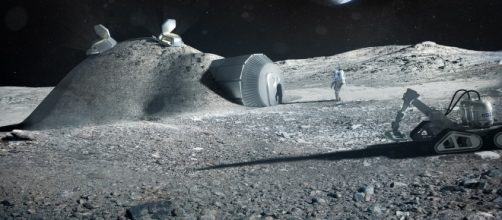The Times of India is reporting that Sivathanu Pillai, a distinguished professor at the Indian Space Research Organisation (ISRO) has suggested that Helium 3, mined from the moon, could meet all of India’s energy needs by the 2030s. The statement indicates an overall rationale for India’s space program, which has focused on the moon to a certain extent. India is not alone in looking at the isotope as a killer app that would justify a return to the moon.
Chinese officials have been quoted in the past as regarding helium 3 as a fuel for clean burning energy, a consideration for a country having to deal with pollution due to coal burning power plants.
Japan also has an interest in lunar mining. Commercial space companies such as Moon Express have also mentioned helium 3 mining as a possible profitable business.
Helium 3 would have the advantage of a fuel for future fusion reactors in that it doesn’t leave radioactive byproducts that would have to be cleaned up from time to time. On the other hand, a fusion reactor using the isotope would have to run much hotter and at higher pressures than other types of fuel. Nevertheless experts such as Dr. Harrison Schmitt, Apollo 17 astronaut and the only geologist to visit the moon, are warm supporters of helium 3 fed fusion as a reason to return to the moon.
With India, China, Japan, and Western commercial companies keen to go to the moon to mine helium 3, the prospect of a scramble for the product exists which, without international agreements, could result in conflict.
The current treaty governing celestial bodies such as the moon forbids claims of national sovereignty but is mostly silent about regulating commercial activities aside from mandating that various countries would be responsible. Some method should be worked out to facilitate the business development of the moon so that conflict between companies from different nations might be avoided.
If helium 3 becomes a practical fuel for fusion energy it could become the most valuable product in the solar system, facilitating as it could the transition of the world’s economy from fossil fuels to clean, limitless energy. Enough exists on the moon for all, but as regime needs to be set up to allow access to the product.

